This is the only list of herbs you’ll need! Learn about the most common cooking herbs to keep in your kitchen, what they taste like, and when to use them in your recipes.
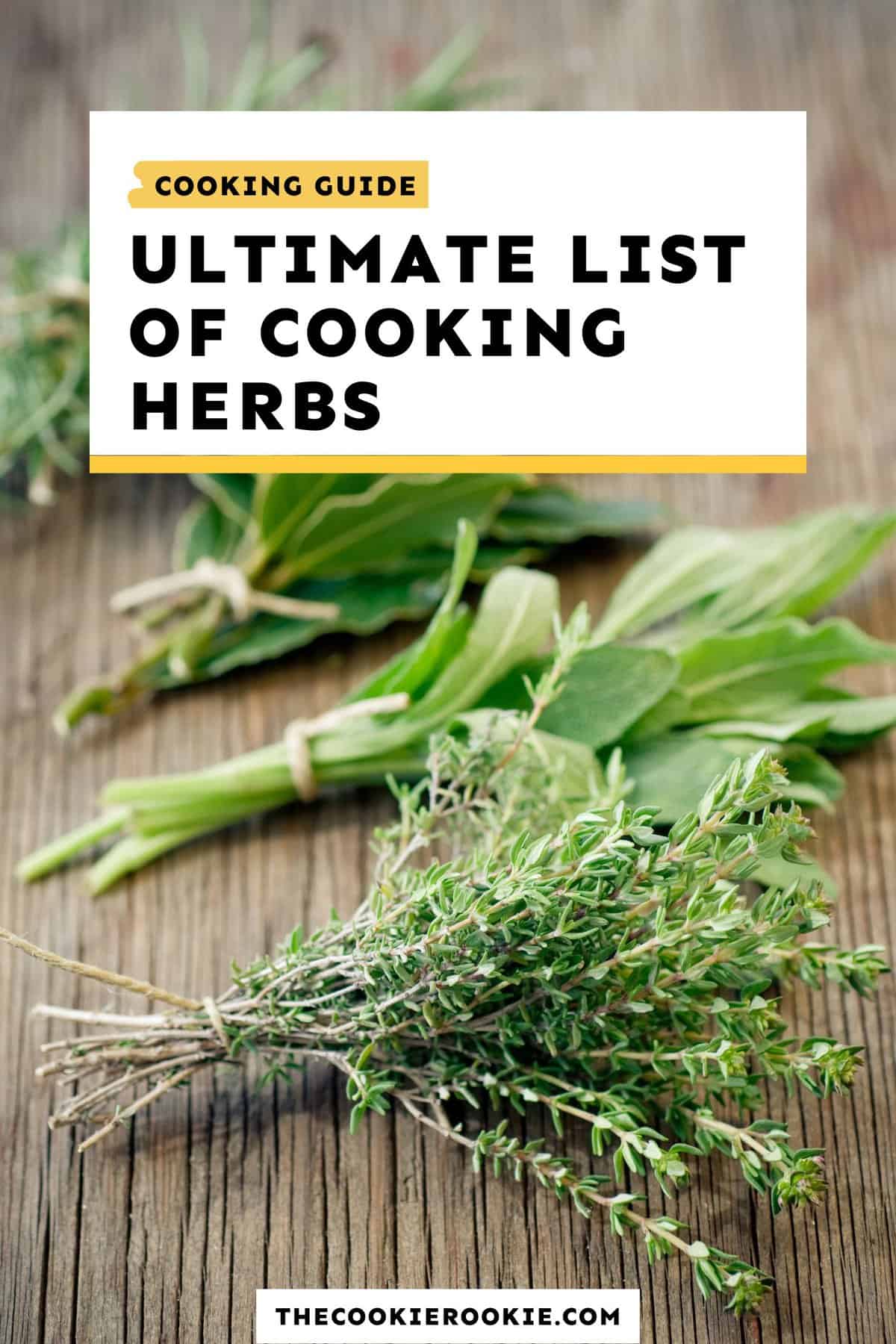
This post may include affiliate links that earn us a small commission from your purchases at no extra cost to you.
List of Common Herbs
Cooking herbs are an important thing to use in the kitchen. Along with cooking spices, they do so much work to make your recipes taste great. No dish is complete without a little extra flavor!
This essential list of herbs includes all the best types you need to know. These are the most common herbs, and you’ll see them come up in recipes again and again.
I’m explaining each one, what it tastes like, where it comes from, fresh vs dried herbs, and how to use it. So consider this your ultimate guide to herbs!
What is an herb?
Herbs are different parts of a plant (usually the leaves or flowering parts) that are used to add flavor to dishes while cooking. They are used either in a fresh or dried form, and are most often sold whole, although sometimes they are chopped or flaked beforehand. Herbs can be added at various stages of cooking, or used as a garnish.
Spices, on the other hand, are similar but are made from other parts of the plant. So basically anything that isn’t a leaf (seeds, roots, etc) would be considered a spice instead.
Fresh vs Dried Herbs
Cooking herbs are typically available in both fresh and dried forms. Fresh herbs are often recommended when cooking, but there are good reasons to use dried herbs too. There are a few things to know about each so you can use the best option for your recipes.
- Fresh Herbs: These are simply a fresh version of the herb straight from the plant. They are more delicate than dried, but overall have a better quality. They have the most natural flavor, but they lose their freshness and potency fast. Fresh herbs should generally be added towards the end of cooking, and are best for garnishes or last minute flavoring.
- Dried Herbs: These have a much longer shelf life, so you can keep them in your pantry. They also have a more concentrated flavor profile, so you won’t need to add as much to your recipes. Dried herbs can also hold up while cooking for long periods.

Cooking Herbs List (A-Z)
Learn everything you need to know about each of the common cooking herbs on this list, so you can use them like a pro chef. Stock up on dried herbs that you use often, and add fresh herbs to your grocery list for weekly recipes.
Basil
Basil is part of the mint family, although it’s much earthier. It does have hints of mint in the taste, along with black pepper and an overall herby aroma. There are varieties that add more of a “spiciness” (that peppery flavor), but in North America, sweet basil is most common. It’s popularly known as being the base for pesto, and an important part of any Caprese salad. It is also used in a lot of Italian dishes, either cooked in or as a garnish.
- When to Use it: To add a uniquely herby and subtly sweet flavor to all kinds of dishes. Goes well with meats, soups, Italian and Mediterranean cuisines, and works as a garnish for your favorite savory recipes.
- Recipes with Basil: Basil Walnut Pesto, Creamy Basil Chicken, Caprese Stuffed Salmon
Bay Leaf
Bay leaves are a leafy herb from the Laurel tree. These are often added to liquid dishes (soups, stews, sauces) while cooking to infuse them with a slightly pungent, yet almost-minty flavor that balances out any richness. Whole bay leaves should be removed from the dish before serving, not eaten.
- When to Use it: To subtly infuse dishes with an herby aroma and balance heavy, rich recipes.
- Recipes with Bay Leaves: Italian Wedding Soup, Instant Pot Ham and Bean Soup, Homemade Marinara Sauce
Cilantro
Cilantro comes from the leaves of the coriander plant and is part of the parsley family. This controversial herb (some love it, some hate it) has a citrusy, peppery taste that comes off bright and fresh. It’s common in Mexican dishes, as well as lots of other cuisines. Fresh cilantro is best because it’s the most flavorful and potent. It loses its luster when cooked for too long, so it’s best to add it to recipes at the end of the cook time, or as a garnish.
- When to Use it: To add a fresh flavor twist to dishes, usually as a final topping or garnish. Goes well with Mexican, Indian, and Mediterranean dishes.
- Recipes with Cilantro: Cilantro Lime Rice, Air Fryer Cilantro Lime Salmon, Chimichurri Sauce
Dill
Dill (also called dill leaves or dill weed) comes from the celery family, and looks like a feathery, green stalk. It adds a fresh, lightly sweet, earthy taste–almost like licorice, but not bitter. It’s known for its use in flavoring dill pickles, ranch dressing, and potato salad. It’s best used fresh and uncooked, or as a garnish, rather than cooked into dishes. It complements cooling, refreshing ingredients and is popular in Middle Eastern cuisines.
- When to Use it: To add a light and crisp taste to cold dishes, dips, and more. Goes well with cucumbers, yogurt, seafood, and creamy spreads.
- Recipes with Dill: Refrigerator Pickles, Chicken Salad Sandwiches, Cucumber Sandwiches,
Marjoram
Marjoram is similar to Oregano (the same family) but marjoram is much milder. Marjoram has a fresh, citrusy flavor profile and it’s a little bit sweet and bitter.
- When to Use it: To add a citrusy warmth to meat dishes, fall recipes, soups, and pastas.
- Recipes with Marjoram: Crockpot Cabbage Roll Soup, Turkey Stuffing
Mint
Mint is a popular herb that most of us immediately associate with a fresh and cool mouthfeel (this is from the menthol). It has a lightly sweet flavor that goes well with all kinds of dishes, including sweet, savory, or spicy foods. It infuses foods with a quick burst of sweetness, balances out spicy foods, and works as a garnish to finish off dishes.
- When to Use it: To add a fresh, sweet flavor to recipes, or to add a cooling balance to spicy foods. It can make all of your cold drinks a little fresher too!
- Recipes with Mint: Lamb with Mint Yogurt Sauce, Pitcher Mojitos
Oregano
The herb Oregano comes from the leaves of the oregano plant, and can be used fresh or dried. It has a pungent, earthy, almost bitter flavor with a hint of minty sweetness. It’s a popular pizza topping, and it’s included in most Italian seasoning mixes. Unlike some herbs, it can be cooked directly into dishes without losing its potency.
- When to Use it: To add an earthy flavor to savory dishes. It goes well with Italian, Mediterranean, and Mexican cuisines.
- Recipes with Oregano: Air Fryer Pizza, Baked Mostaciolli, Garlic Butter Steak and Potatoes
Parsley
Parsley is a leafy little herb that’s most often used as a garnish to finish off a dish, but it can be used to cook with too. It has a bright and slightly bitter taste that balances out other flavors. It also adds just a pop of flavor to anything you like. Chop it up and add it to a range of cuisines, meats, rice or veggie dishes. You can also cook it into soups and use it to make flavorful sauces.
- When to Use it: To add a bright flavor and pop of color to finish off just about any savory dish.
- Recipes with Parsley: Baked Italian Chicken, Cheesy Artichoke Bruschetta, Garlic Parmesan Fries
Rosemary
Rosemary is such a vibrant herb with a beautifully aromatic and complex flavor. It’s mildly sweet and flowery, but also has a savory, peppery aspect. It adds the most amazing, rich taste to all kinds of dishes. It can hold up to long cook times to infuse foods with lots of flavor, and it makes a great garnish as well.
- When to Use it: To add a complex, woodsy flavor to lots of recipes. It goes well with meats (like lamb or chicken), vegetables, breads, citrus flavors, and lots more.
- Recipes with Rosemary: Garlic Rosemary Turkey Breast, Dutch Oven Rosemary Bread, Rosemary Garlic Steak
Sage
Sage has a mix of earthiness, refreshing eucalyptus, and citrusy lemon, finished off with a pepperiness. This bold flavor holds up well in recipes, and works well with heavier meat dishes, sauces, and rich foods. It’s great for savory, aromatic dishes.
- When to Use it: To add a rich and aromatic taste to poultry, veggies, soups, and pastas.
- Recipes with Sage: Roasted Butternut Squash with Sage, Sausage Stuffing, Brined Chicken Breast with Crispy Sage
Tarragon
Tarragon is a leafy green herb most known for its use in French cooking. It has a licorice, anise-like flavor that is sweet, salty, and bitter, but it also has a freshness to it that balances it out so it’s not overwhelming. It’s best when fresh, as dried forms are much less potent. Strip fresh leaves from the stem and gently chop them up to add to dishes. It turns bitter if cooked too long, so use it as a garnish or add it towards the end of cooking.
- When to Use it: To add a hint of bittersweet flavor to dishes. It goes well with poultry, seafood, eggs, rich sauces, and vegetables.
- Recipes with Tarragon: Apple Ham Frittata, Herbs de Provence, Cheesy Sausage Stuffed Mushrooms
Thyme
Thyme has a sharp herbal flavor with some floral hints, but it is well balanced among other flavors. It’s a tough herb that holds up while cooking and infuses dishes with a beautiful, savory warmth. It can also be added at the end of cooking to finish a dish.
- When to Use it: To add a light and savory flavor to meat dishes, veggies, soups, and sauces.
- Recipes with Thyme: Sauteed Carrots with Thyme, Sheet Pan Lemon Salmon

Kitchen Herbs List
To wrap up, here are the 12 cooking herbs we covered. We definitely recommend stocking up on these for your kitchen, so you’re always ready to cook!
- Basil
- Bay Leaf
- Cilantro
- Dill
- Marjoram
- Mint
- Oregano
- Parsley
- Rosemary
- Sage
- Tarragon
- Thyme
This list of common herbs is really all you need for everyday cooking, although there are always some specialty ones that pop up from time to time. Use this guide anytime you’re unsure about which herbs to use in your recipes, or looking for just the right one to add the flavor your want.
Cooking Guides
Learn more about stocking your kitchen and basic cooking skills, so you’ll be ready to cook anything and everything!
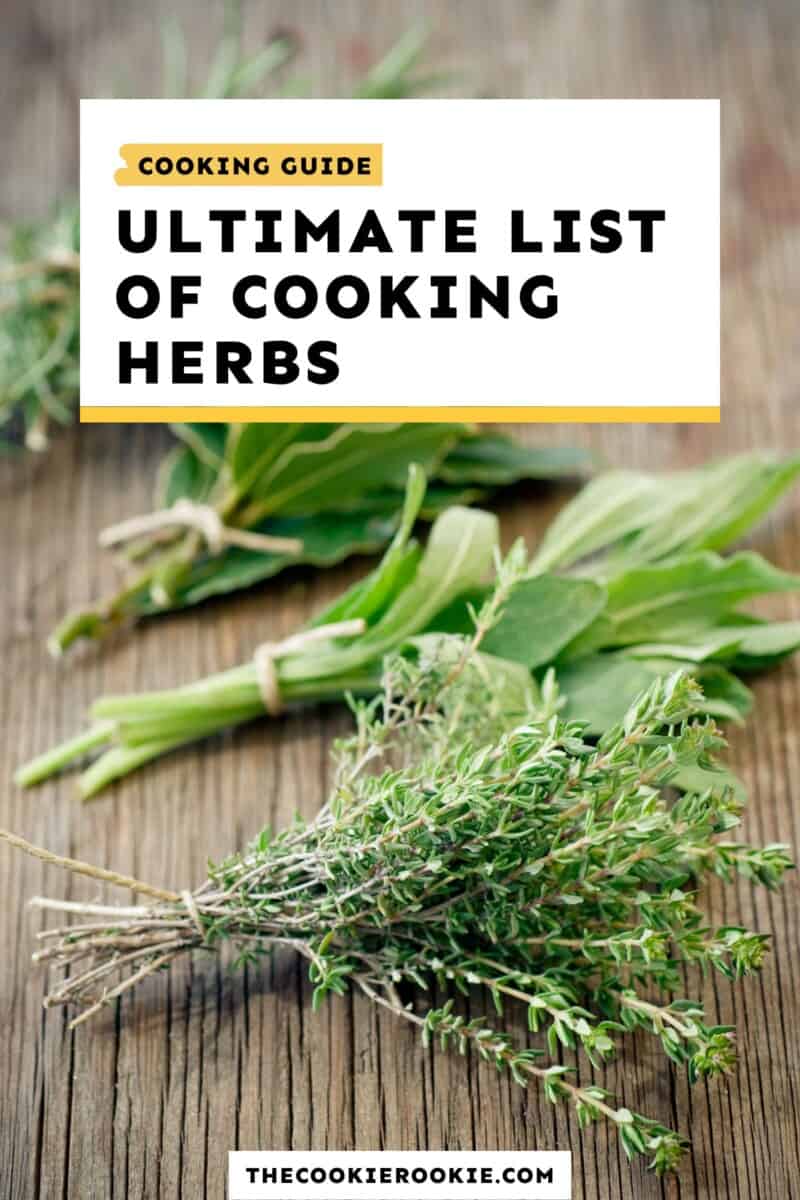

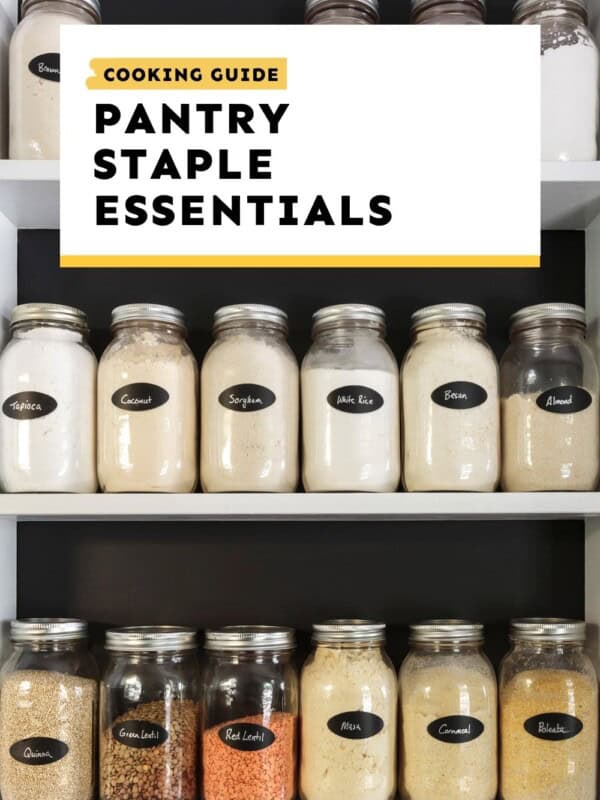
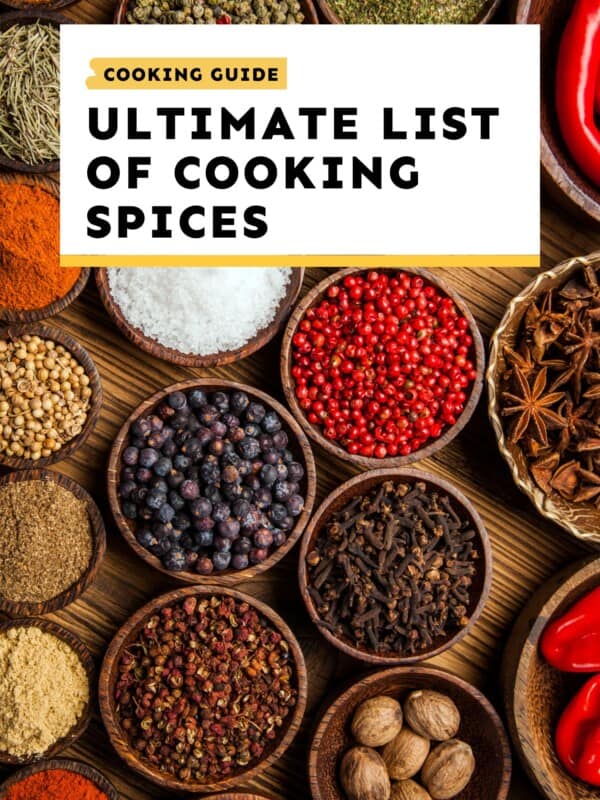
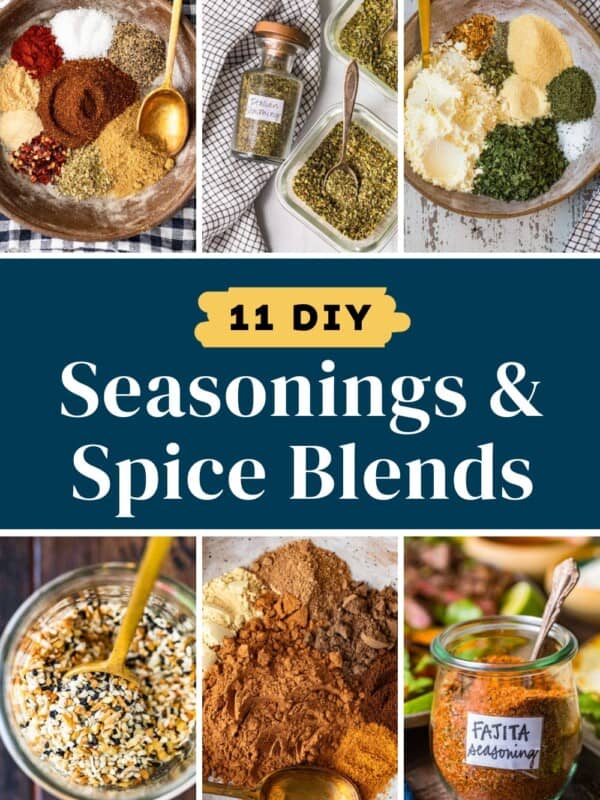






Herbs and spices 101, a great overview/explanation of our basic herbs and spices. Excellent review for the novice or intermediate cook, but also a nice refresher for home cooks like me that have been cooking for almost 50 years. Nice job Becky!
Thank you, Perry!